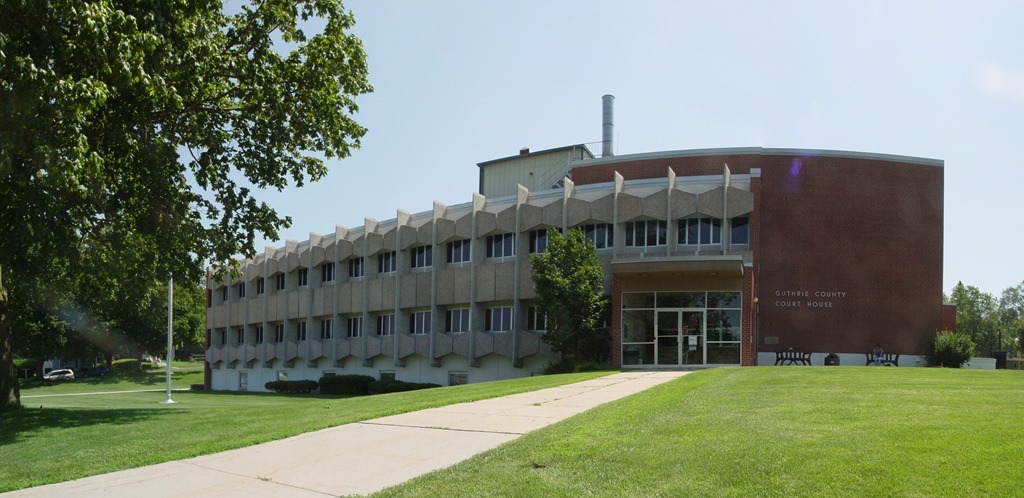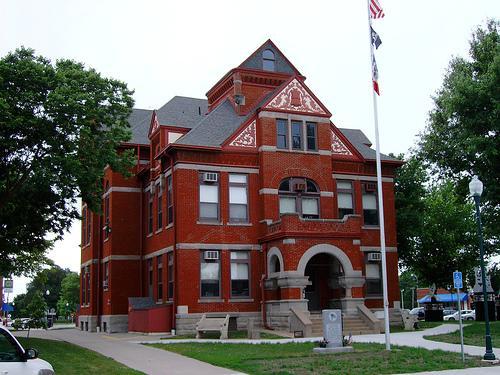Since the founding of our communities, organizations, businesses and citizens have stepped forward to build and serve their community. Click on any of the logos below to learn about those who made this website possible! If you would like to learn about becoming a sponsor CLICK HERE!

- Counties: Guthrie County, IA and Adair County, IA
- Region: Southwest IA
- Sponsors
- About Stuart, IA
- Businesses
- Community Organizations
- Faith Organizations
- Festivals and Events
- Points of Interest
- Veterans
- Visit Website
Learn how to Contribute to any of the above categories.
No news yet. Got some news? Hit that NEW POST button!
About Stuart, IA
Stuart began as a small Quaker community by the name of Summit Grove. The first settlers arrived around 1850. The group was made up of Quakers from the states of Indiana and Ohio. The location for the town was chosen because it was the high point where the prairie and timberlands met. Stuart had its start in the late 1860s by the building of the Chicago, Rock Island and Pacific Railroad through that territory. It is named for Charles Stuart, who was instrumental in bringing the railroad to the city.
Charles Stuart
Around the time of Summit Grove, a young man named Charles Stuart visited. The Vermont man was an agent for a scales company visiting the area.
Later, after serving time in the Civil War, Captain Charles Stuart made the decision to purchase land near present-day Stuart. In 1868, Captain Stuart purchased additional land in the area that became the original town of Stuart. The land set between Guthrie and Adair Counties. Around that time, the Rock Island Railroad was completed. Captain Stuart worked with railroad officials to ensure the city of Stuart would be the site of the division station as well as machine shops. Captain Stuart worked as manager and leader of the project. This plat of the town was filed on record September 29, 1870.
Throughout the early years, prominent business owners in the community invested money and land to ensure that the Rock Island Railroad would establish headquarters in Stuart. The railroad ended up writing a contract making Stuart the division headquarters forever.
Railroad Influence, Late 1800s
Through the 1870s, Stuart experienced quite a bit of growth. Various businesses started building wood framed buildings. In 1873 there was a fire causing some damage. In 1874 and 1875, planning and construction of several brick buildings began, some of which still exist. A newspaper was established in 1871, named the Stuart Locomotive.
Construction began on railroad shops. These buildings started as wood frame, but were replaced with brick and stone over time. The engine house was continually increased over the years to eventually accommodate 38 engines. Part of the region also consisted of blacksmith, boiler, and machine shops. By 1875 there was a workforce consisting of 94 machinists/shop helpers, 45 engineers, and 45 firemen. The infamous silver engine “America” was housed for some time in the shops in Stuart. This engine was purchased at the World Exposition in Paris in 1867. This shop was the only large one on the Rock Island Line between Silvis, Illinois and Omaha, Nebraska.
The brick train depot was constructed in 1879 with material leftover from a demolished depot in Rock Island, Illinois. This building is still standing in Stuart and can be found right on Front Street, near City Hall. This depot contained a “ladies’ and gentleman’s waiting room, station or ticket office, and a spacious baggage room.”
Growth in Stuart continued over the years. There were rumors that the shops may move elsewhere, but they were quickly put to rest. New construction took place for incoming businesses. The people of Stuart no longer had to travel to Des Moines for their commodities, along people to stay and grow the community. Various new businesses started: banks, hotels, boarding houses, coal dealers, jewelers, cigar factory, saloons, a brewery, drug stores, hardware stores, etc.
Bonnie and Clyde
One of the more popular things to happen to Stuart is the robbing of the First National Bank on April 16, 1934 by the infamous crime couple Bonnie and Clyde. The building still exists, currently the home to a hair salon. A sign above the doorway on the exterior mentions the place as the location of the crime. The building is at the intersection of 2nd and Division Streets.
1960s to Today
During the 1960s Interstate 80 was built across Iowa, going right past Stuart. This led to Stuart becoming the largest town between West Des Moines and Council Bluffs along the Interstate. This led to a greater ability for Stuart residents to commute to work in Des Moines, opening access to jobs that had previously been more difficult to commute to.
Throughout the time from the 60s to the 90s the area near the Interstate expanded. Restaurants and gasoline stations were constructed. In the 1990s there was an increase in new construction. In this time Stuart saw three new fast food establishments, joining the two already there. Two new motels were added (bringing the Stuart total to four).
Stuart has seen quite a bit of development in recent years. A new City Hall and Library was constructed at 119 E Front Street. Work was done to renovate the exteriors of many buildings in the downtown area. This facade project brought a historic, yet still fresh, appearance to many local businesses. Currently, Division and 2nd Streets are being replaced in the downtown area to bring a new, high-quality street and sidewalk area to the downtown.
Guthrie County, IA
Visit our county page and you will find information about our town and county's points of interest, festivals/events and faith community. You also will learn about the community organizations that have built and continue to build strong communities (chambers, community groups, and departments, etc) and much more when you visit the Guthrie County, IA page.
Adair County, IA
Visit our county page and you will find information about our town and county's points of interest, festivals/events and faith community. You also will learn about the community organizations that have built and continue to build strong communities (chambers, community groups, and departments, etc) and much more when you visit the Adair County, IA page.


